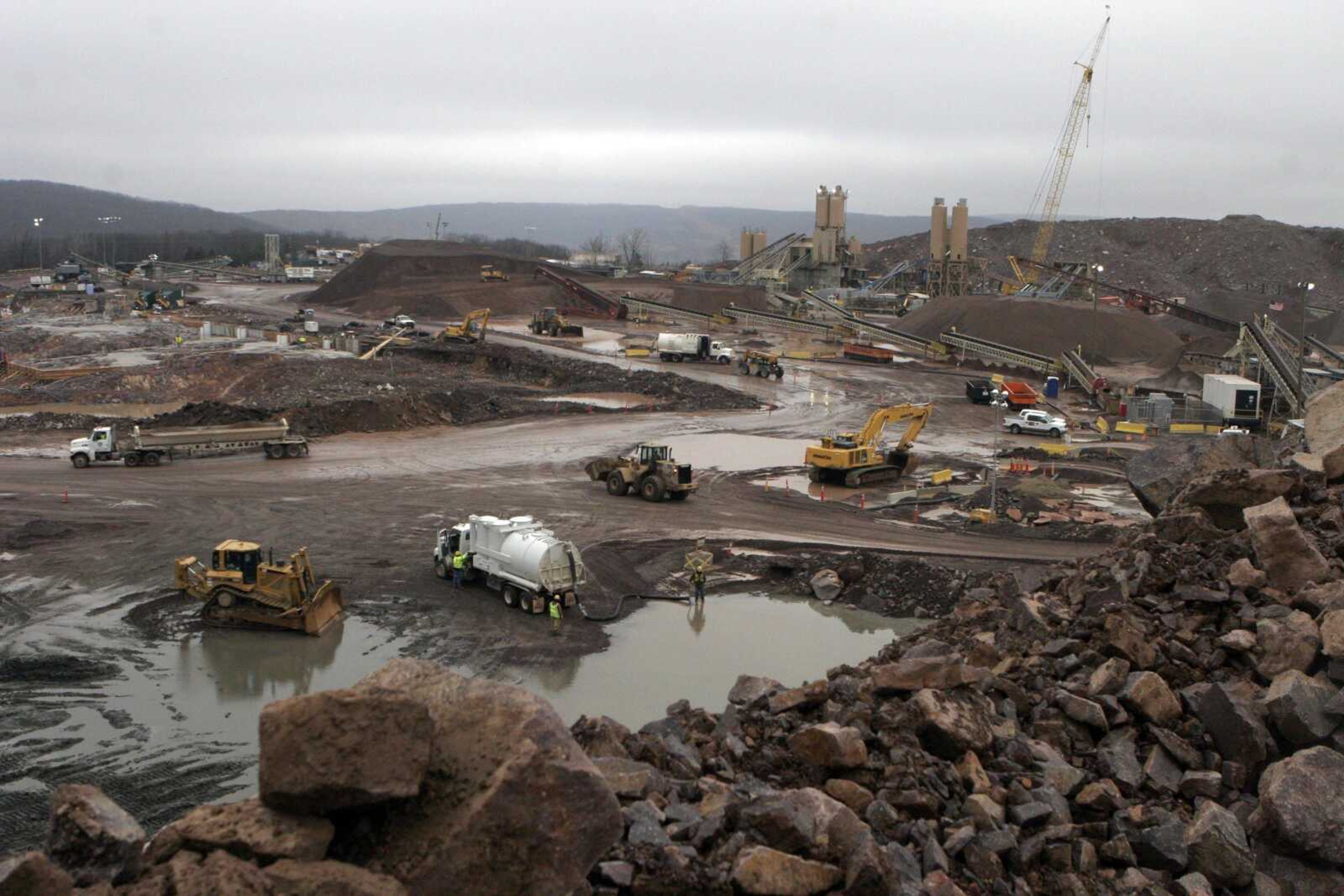Ameren rebuilding Taum Sauk reservoir now that legal woes are over
LESTERVILLE, Mo. -- Two years after it collapsed, the Taum Sauk reservoir is a busy pit of construction vehicles, work crews and cement plants. St. Louis-based Ameren Corp. is rebuilding the facility now that it has paid nearly $180 million to settle all state claims over the collapse, which happened in the pre-dawn hours of Dec. 14, 2005. For residents of surrounding rural Reynolds County, the reservoir's rebirth means the promise of steady tax payments for decades to come...
~ A lawsuit seeks to stop the reconstruction.
LESTERVILLE, Mo. -- Two years after it collapsed, the Taum Sauk reservoir is a busy pit of construction vehicles, work crews and cement plants.
St. Louis-based Ameren Corp. is rebuilding the facility now that it has paid nearly $180 million to settle all state claims over the collapse, which happened in the pre-dawn hours of Dec. 14, 2005. For residents of surrounding rural Reynolds County, the reservoir's rebirth means the promise of steady tax payments for decades to come.
Residents "trust Ameren and they want this dam rebuilt," said Earlene Fox, superintendent of the Lesterville School District, which gets more than half its funding from Ameren's annual tax payments. "I think the community is very positive with Ameren. They always have been positive."
But a lawsuit this week by the Missouri Parks Association seeks to stop the reconstruction. It wants the Federal Energy Regulatory Commission to more adequately study the environmental effect of reopening the hydroelectric plant or alternatives to rebuilding it.
The nearly $180 million deal Ameren reached with the state two weeks ago still needs the approval of a Reynolds County judge.
Rebuilding the reservoir will be a massive effort as Ameren tears down the basin's old earthen walls, then grinds up the material and uses it to make a cement structure the company promises will be safe.
Ameren vice president Mark Birk said the project is expected to cost more than $450 million and will be completed in late 2009.
The company gave its first post-breach tour of the reservoir Thursday. Much of the old earthen structure has been torn down and fed into a churning series of rock crushers and conveyor belts set in the middle of the reservoir. The crushed stone is then fed into small cement plants nearby, where it will be mixed with fly ash, cement and other materials to make compacted concrete for the new reservoir walls.
Birk said the new material will be safer than the original dirt-and-stone design built in 1963. A new spillway is designed to ensure an overflow does not eat away at the walls and make them collapse. The system to control the water levels, which failed in 2005, is still being redesigned, Birk said.
Two years ago today, those walls came spilling open after the reservoir was overfilled. More than 1 billion gallons of water went rushing down the side of Proffit Mountain, forming a wave some 30 feet high at times.
The deluge washed over Johnson's Shut-Ins State Park, injuring the park superintendent's family of five and devastating much of the popular tourist destination.
Since that day, Ameren has been embroiled in litigation and investigations. Attorney General Jay Nixon sued the company, while FERC levied a $15 million fine, the largest in the agency's history.
Six independent investigations showed that managers at the plant knew that critical safety equipment was broken, but delayed repairs for weeks before the collapse. An engineer testified that he requested several times to shut the plant down, but was turned down by Ameren's energy marketing division. Managers were waiting for an economically opportune time to close the plant.
The reservoir acts like a giant bathtub, holding water that was released into turbines in a hydroelectric plant below to generate power.
Ameren officials have repeatedly denied that the drive for profits played a role in the collapse. Birk and others told the Missouri Public Service Commission that managers at Taum Sauk didn't understand the dangers posed by the faulty equipment.
Birk said Thursday that Ameren is hurrying to rebuild the plant so it can meet energy needs of customers during the peak summer months.
"We need the facility back in service and operational to meet our [electricity] load obligations for the summer of 2010," Birk said.
"We believe that we can operate it safer, and more conservatively," Birk said.
Connect with the Southeast Missourian Newsroom:
For corrections to this story or other insights for the editor, click here. To submit a letter to the editor, click here. To learn about the Southeast Missourian’s AI Policy, click here.









